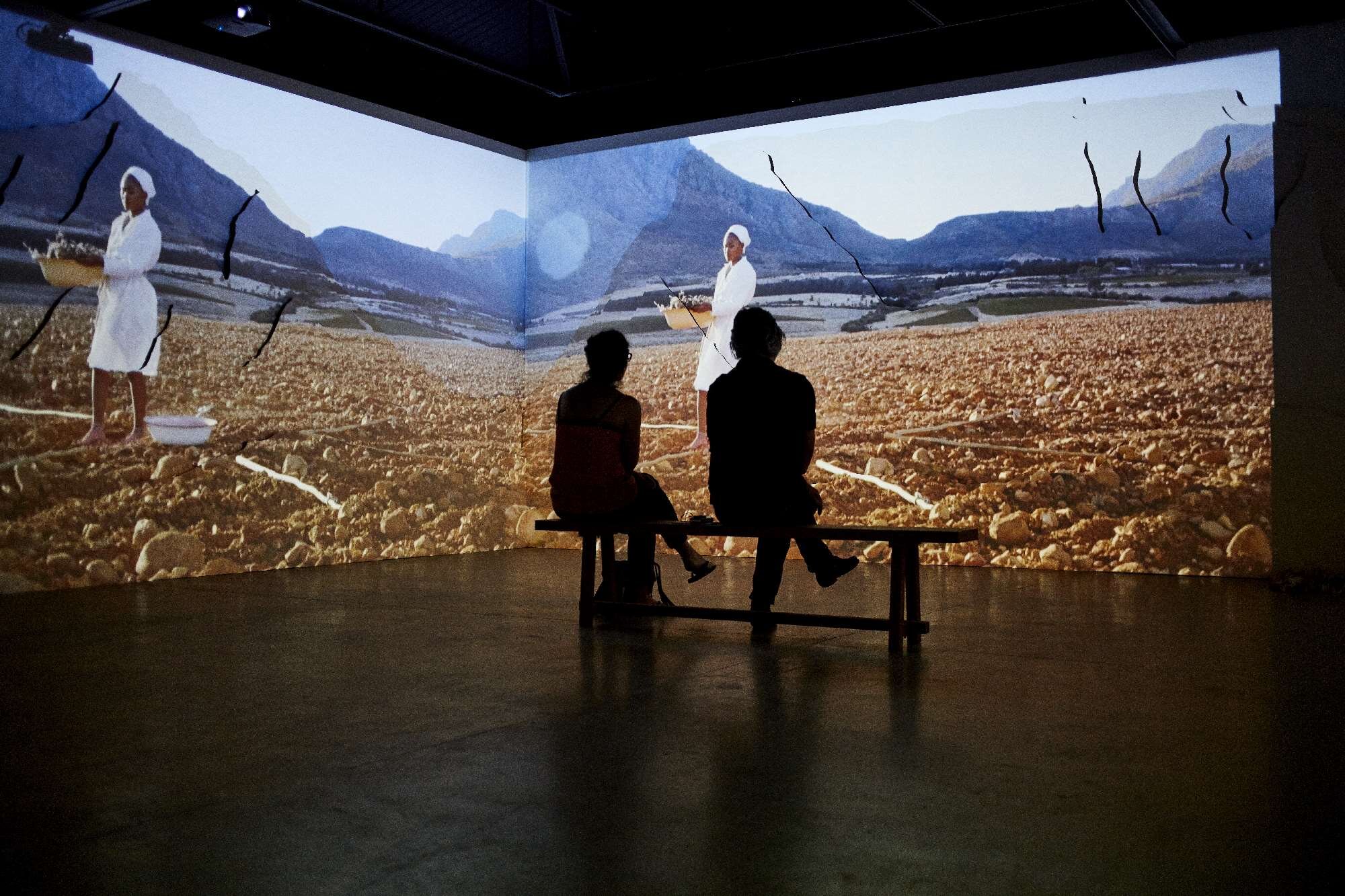The South African multi-disciplinary artist discusses ubungoma and her ideas of home
“Don't look forward to it, it's quite boring – it’s one hour of boredom,” Buhlebezwe Siwani tells us on the the afternoon before she is due to perform at Now Look Here - The African Art of Appearance, the Amsterdam exhibition that Nataal is a media partner for. We took this exclamation to be a combination of nerves and modesty and, in part, it was, but after seeing the performance, it’s clear that this young talent must have been stifling a laugh when she described it so.
The following day, dressed in a prim and proper lace gown, Siwani’s performance mesmerised. For part of it, she took a lipstick and wrote about home on twin mirrors while a recording of the questions, “Where are you really from? Where are you from from?” rang out. And as anyone from the diaspora or with dual heritage can attest, there is nothing more boring than having to repeatedly answer those questions.
Siwani splits her time between Cape Town and Amsterdam and so we’re wondering if her work responds to and is shaped by the different places. “I'm black you know; I’m not going to change. I can't become Rachel Dolezal in a second and choose to be white, it doesn't work like that for me.”
She has a point. Since graduating from the Wits School of Arts in Johannesburg in 2011 and then completing a masters at the Michaelis School of Fine Arts in Cape Town in 2015, the thematic nature of her work remains rooted in exploring the black female body while interrogating African spirituality and its relationship with Christianity. And it has seen her exhibited at the Curitiba Biennale 2019, Bamako Biennale 2019, Documenta14, Art/Afrique, Le Nouvel Atelier and Fondation Louis Vuitton, to name but a few.
“When I began my work – and it hasn't changed – it was under the umbrella of spirituality. What African spirituality really means and how it speaks to colonisation, history, socio-economic conditions, tradition, the black female body. And how all of that takes effect in the present world where we have manifested ourselves as human beings. I just started thinking about the things we construct and the things that have been constructed for us and the ways in which the black female body is through ubungoma.”
“When I began my work it was under the umbrella of African spirituality”
Siwani is a sangoma, a traditional healer, having begun her spiritual journey ten years ago, although there were elements of that indigenous practice in her childhood home. “There would be a practice similar to the burning of sage where they would cleanse the house and we would have thanksgiving ceremonies,” she remembers. “But when I started my spiritual journey, things just came to a head and that was it. There are certain things that have to be done culturally and spiritually as an African.”
As a result of colonisation and the arrival of missionaries, there is tension in South Africa between those who practice ubungoma and those who practice Christianity, with things like the Witchcraft Suppression Act of 1957 still having a negative impact and sangoma, who are all too often viewed as ‘unclean’. Her work on show in Amsterdam, named iSana libuyele kunina, addresses this.
"I shot the photo series in 2015 and its title means, 'The child has returned to the mother',” she explains. “I'm always in my own photographs because my body relates exactly what I’m talking about and captures the essence of it. That’s not me being weird or egotistical, it’s the simple fact that I understand where I’m going with this work and there's a knowledge that I have about ubungoma and spiritualism.”
She continues: “The body is a vessel for all of these ancestral things which were demonised in Africa and the garment that I’m wearing his that of an izangoma. I made this garment trying to say that these people are thought of as dirty, but we aren't, we heal spirits and heal people spiritually. The chicken is generally used for sacrifice but it's also a stand in for the ancestor who travels with you continuously. I put it on this street in this township because that's where you would find people who practice. It’s in front of the church because I liked the way it has eroded. This structure that just came out of nowhere, which they tried to make pretty while at the same time that things which don’t belong to us are beautified, they make the human ugly. So, this series is trying to shift the narrative.”
Living a relatively nomadic life and as a black woman in the Netherlands and a sangoma in South Africa, for Siwani home is her spiritual space and her studio. “Even in South Africa, when I’m inside my house, that's where I feel the most at home. I am most comfortable and expressive in my studio and in my spiritual space. It's where I can be myself and it's where I can commune with the ancestors, so I feel complete in those places.” Which is exactly what her performance piece addressed. “My country was colonised by the Dutch first so I definitely have a strange relationship with the Netherlands. It’s about being displaced and saying this is all I know. It’s about fitting into two different places yet not knowing exactly where to fit in.”
Read our Now Look Here interview with Yves Sambu here.
Now Look Here – The African Art of Appearance is on view at Amsterdam North until 23 February 2020
Visit Buhlebezwe Siwani
Visit Now Look Here:
Published on 17/02/2020





